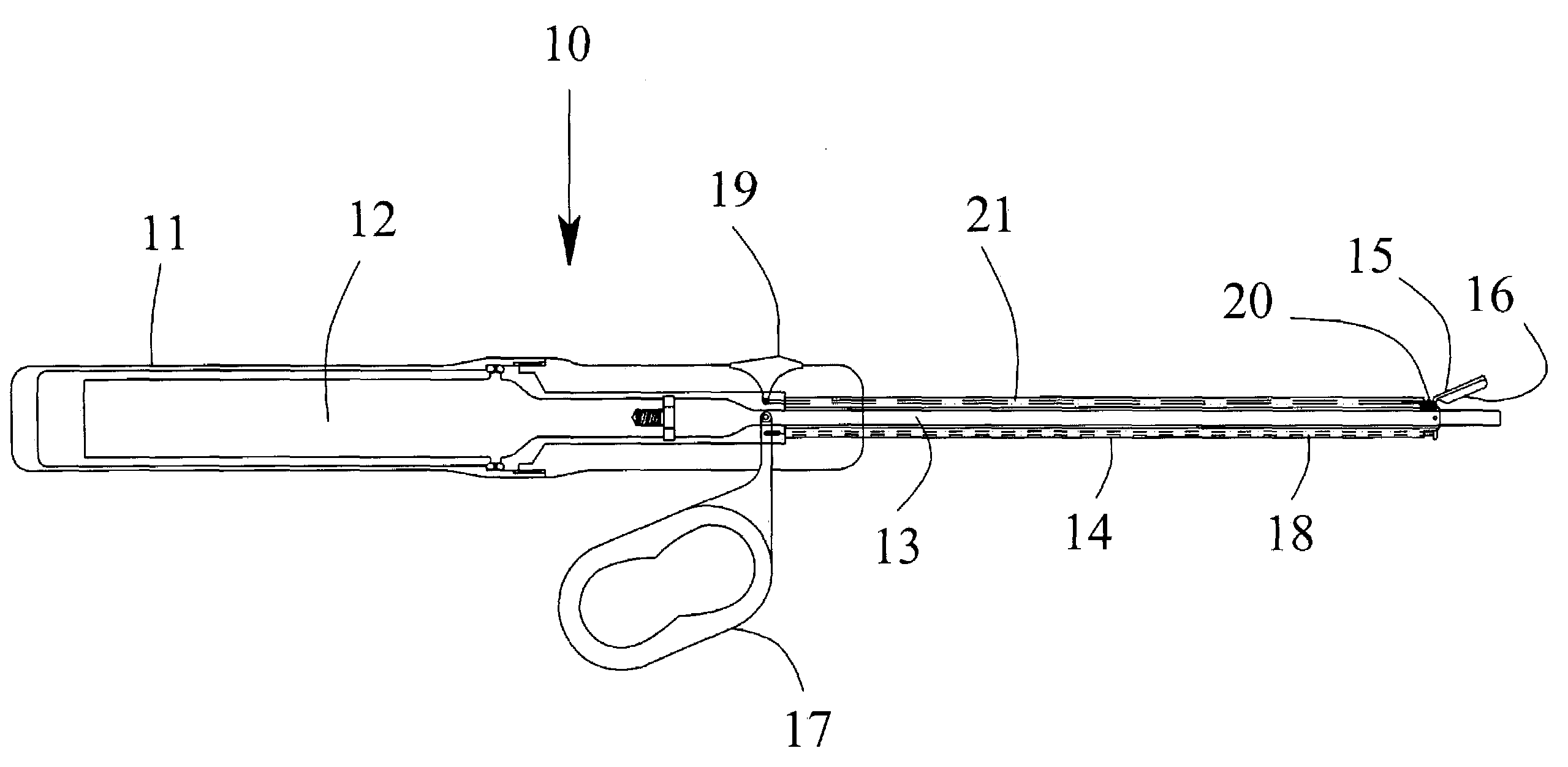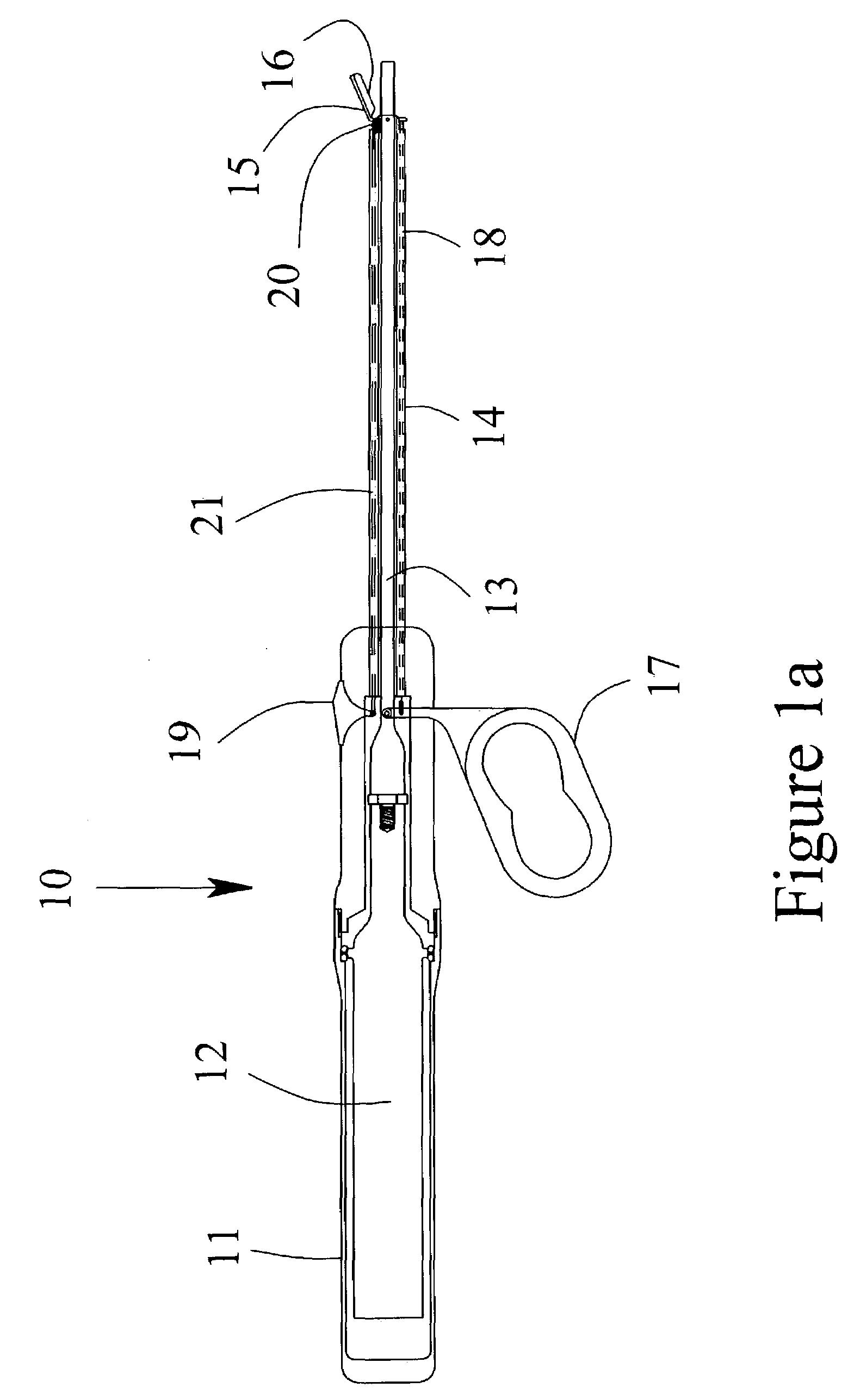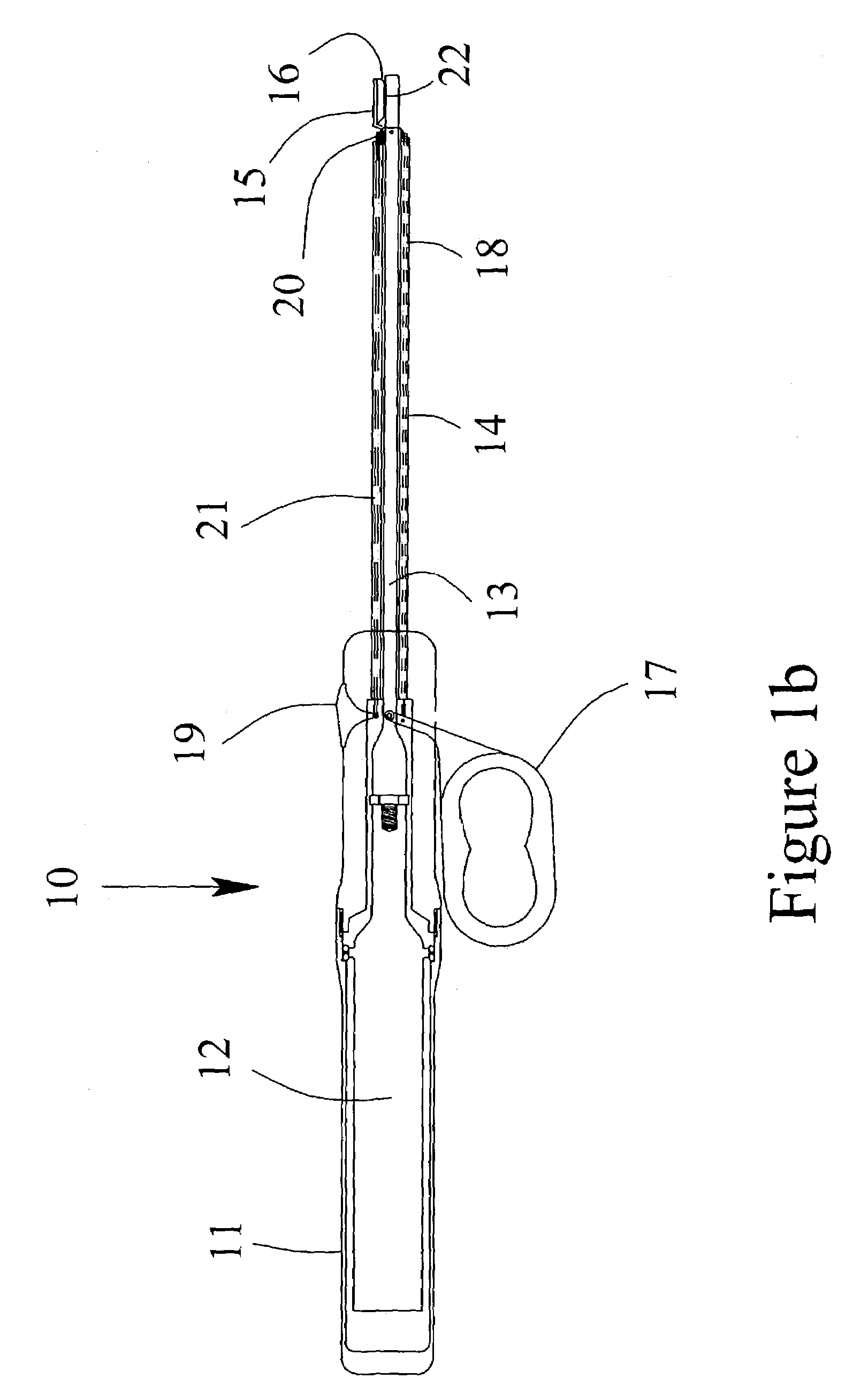Ultrasonic device and method for tissue coagulation
a tissue coagulation and ultrasonic technology, applied in the field of surgical instruments, can solve the problems of diffuse bleeding, coagulated tissue to be re-opened and bleed, and undesirable thermal trauma to adjacent tissues, so as to improve coagulation, improve coagulation, and coagulate tissue.
- Summary
- Abstract
- Description
- Claims
- Application Information
AI Technical Summary
Benefits of technology
Problems solved by technology
Method used
Image
Examples
Embodiment Construction
[0026]Referring to the drawings, FIG. 1a is a schematic representation of one preferred embodiment of the invention. FIG. 1 illustrates a partial cut-away view of the present invention including an ultrasonic surgical instrument, generally designated 10. The instrument has a surgical handle 11 to be held and manipulated by the surgeon. The surgical handle 11 may be fabricated from either machined or molded plastic components. An ultrasonic transducer 12 is mounted within the surgical handle 11 for generating ultrasonic vibrations. The ultrasonic vibrations may be generated using any common and well-known means such as the use of PZT crystals held in compression.
[0027]An ultrasonic applicator 13 is attached to the ultrasonic transducer 12 and extends distally from the ultrasonic transducer 12. The preferred method of attachment is a threaded joint. The ultrasonic applicator may be fabricated from any suitable metallic material including, for example, titanium alloys, aluminum alloys,...
PUM
 Login to View More
Login to View More Abstract
Description
Claims
Application Information
 Login to View More
Login to View More - R&D
- Intellectual Property
- Life Sciences
- Materials
- Tech Scout
- Unparalleled Data Quality
- Higher Quality Content
- 60% Fewer Hallucinations
Browse by: Latest US Patents, China's latest patents, Technical Efficacy Thesaurus, Application Domain, Technology Topic, Popular Technical Reports.
© 2025 PatSnap. All rights reserved.Legal|Privacy policy|Modern Slavery Act Transparency Statement|Sitemap|About US| Contact US: help@patsnap.com



